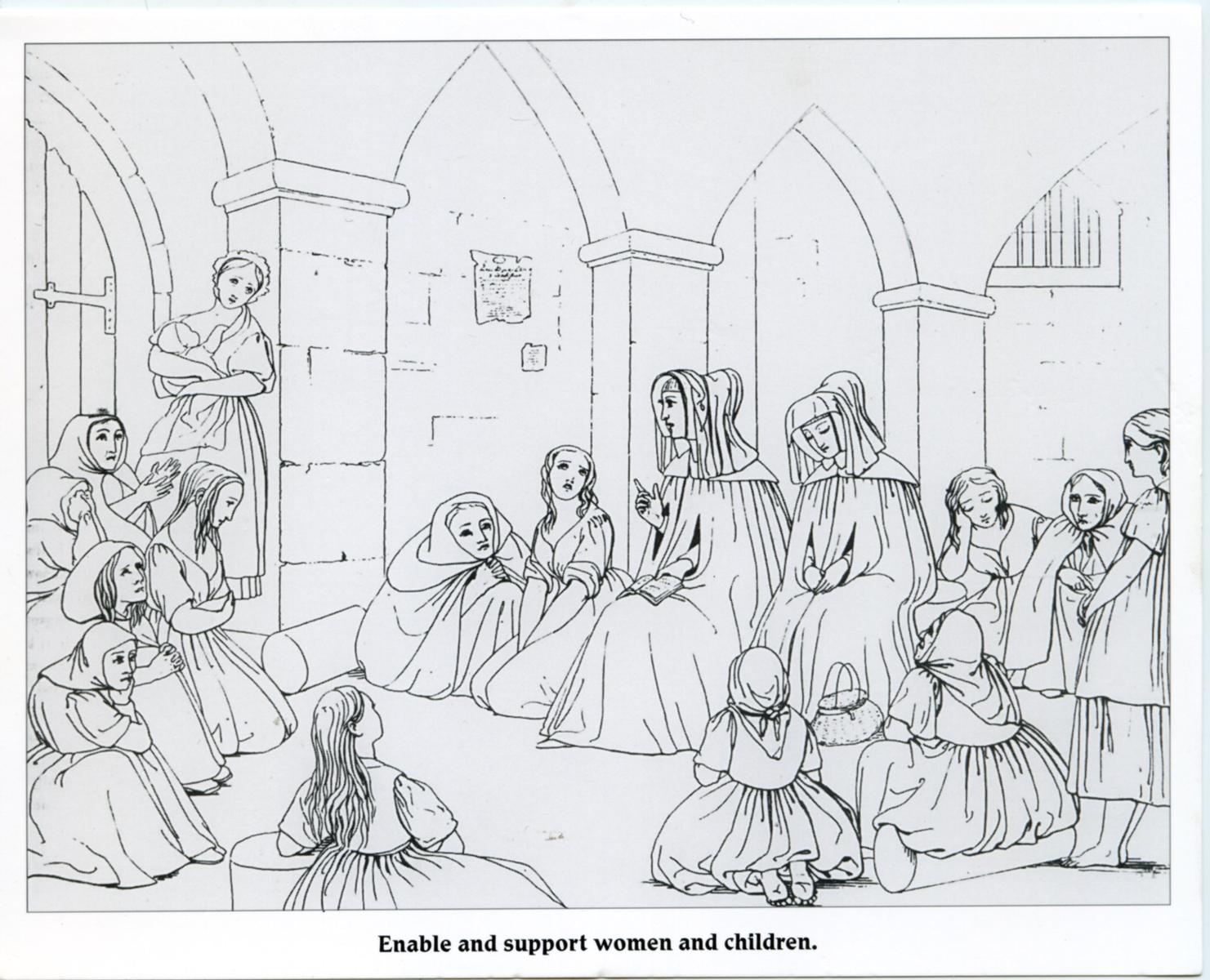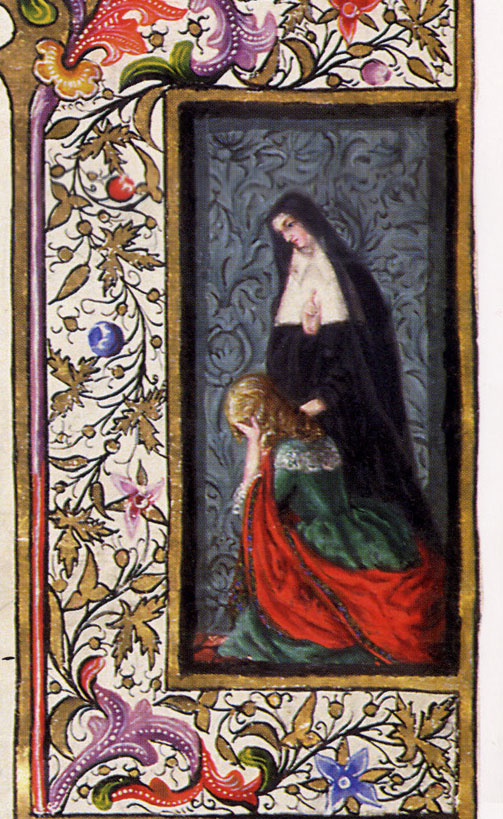|
Catherine was about to set out for her daily trip to visit poor families in the village when one of the girls from the kitchen hurried up to her and asked her if she would speak with her friend who had come from a house in the city where she worked as a domestic servant.
 The young woman who was introduced to Catherine was in her mid teens, very pretty but obviously distraught. Catherine had soon relaxed her and was listening attentively to the harrowing story she told. She had come to Dublin over a year ago to work as a kitchen maid. She was the youngest of a family of ten and had to leave home to make room for her brother to marry and take his wife to their small farm. Soon after taking up her employment, a son of the owner of the house began to harass her. Last night he had attempted to rape her. The girl needed a place to ‘live out’. She had her pride and did not wish to be taken in out of charity. She wanted a proper place to live and she wanted Catherine to help her to find it. The young woman who was introduced to Catherine was in her mid teens, very pretty but obviously distraught. Catherine had soon relaxed her and was listening attentively to the harrowing story she told. She had come to Dublin over a year ago to work as a kitchen maid. She was the youngest of a family of ten and had to leave home to make room for her brother to marry and take his wife to their small farm. Soon after taking up her employment, a son of the owner of the house began to harass her. Last night he had attempted to rape her. The girl needed a place to ‘live out’. She had her pride and did not wish to be taken in out of charity. She wanted a proper place to live and she wanted Catherine to help her to find it.
Having heard her story, Catherine sent for a driver and asked him to prepare the horse and carriage to take her and her young visitor to an institution in the city that housed young women. On arrival at the institution, Catherine presented the request. To her dismay she was informed that her request could not be processed until the committee would meet in a few weeks time. Catherine’s pleas about the urgency involved had no effect.
Leaving the place Catherine assured the girl that she herself would represent her at the committee meeting and in the meantime she invited her to call to Coolock whenever she had free time from work.
That was the last time Catherine saw the girl but her dreams were constantly haunted by the face of that young girl for whom she failed to find help in her hour of need. She prayed and hoped that someday, somehow she would provide a home space for women seeking refuge.
Shelter for the Homeless
The years in Coolock brought Catherine into contact with the young servant girls in the house and with their friends who were also servants. They soon realised that in her they had someone from whom they could expect the kind word, the compassionate look and the patient hearing of their sorrows and so they confidently poured out their troubles to her.
Many of them were girls from the country, come to Dublin in search of work. Some of them were the daughters of country people who had been forced off their small holdings by the Penal Laws. These were girls who had known better days but whose families were now living in extremely poor conditions and who had no other choice but to migrate to the city to compete for a livelihood in a declining market for paid employment. They told her of their many friends who were being paid only a pittance in the houses of the gentry and even of others who were homeless.
For the moment, Catherine could do little more than offer advice and encouragement, but her powerlessness to address their sad plight haunted her and strengthened her resolve to find a way. The day that the lawyer informed her that she was sole heiress to the entire estate of William Callaghan was the day Catherine knew that she now had the freedom and means to create a House of Mercy to shelter homeless girls and women. Her house of Mercy which opened on 24 September 1827 was at once a hostel for homeless girls and unemployed young women, which gradually developed into an employment bureau and a centre of adult education.
Support for the Unemployed
 Catherine knew firsthand the misery of unemployment and its dire consequences. In her visits to the poor people Catherine knew firsthand the misery of unemployment and its dire consequences. In her visits to the poor people
of Coolock, she had met many who had been formerly employed as servants in the ‘big houses’. They had worked as cooks, housekeepers, footmen, coachmen, gardeners, stewards and were reasonably comfortable but they had fallen on very hard times when the ‘big houses’ began to close in the wake of the Act of Union and the owners went to live in London. Many of the unemployed girls and women, unable to provide for the bare necessities of food and shelter were forced into prostitution just to survive. With close on 400 brothels in Dublin at the time, it presented an option to those who were desperate.
Catherine’s attitude to the plight of these women was different to that of the majority who made no distinction between those pursuing prostitution as a chosen path and those forced into it by severe poverty. She would often refer to the latter as ‘women of good character’ and ‘distressed women’. So sensitive was she to their plight that on admittance to the House of Mercy she insisted that only she or a Sister appointed by her could enquire into their personal lives.
At the house of Mercy, these women were trained in needlework, laundry and other domestic services. Careful training improved job possibilities and provided a ladder upwards. Instruction in faith and its practice, the spiritual guidance of a chaplain and training in good manners were designed to lay a solid foundation for the day they would run their own homes. Convinced that the careful education, formation and training of women contributed to incalculable good not only to them, but also to society, Catherine fostered a sense of individual dignity, attentive care to person and surroundings and sound devotional practices as her paramount aim. She knew what her society had to say of unprotected girls and distressed women and in her mission of service she wanted to provide means to develop beyond that criticism.
Image: from the "Objects of the Congregation"
|

 The young woman who was introduced to Catherine was in her mid teens, very pretty but obviously distraught. Catherine had soon relaxed her and was listening attentively to the harrowing story she told. She had come to Dublin over a year ago to work as a kitchen maid. She was the youngest of a family of ten and had to leave home to make room for her brother to marry and take his wife to their small farm. Soon after taking up her employment, a son of the owner of the house began to harass her. Last night he had attempted to rape her. The girl needed a place to ‘live out’. She had her pride and did not wish to be taken in out of charity. She wanted a proper place to live and she wanted Catherine to help her to find it.
The young woman who was introduced to Catherine was in her mid teens, very pretty but obviously distraught. Catherine had soon relaxed her and was listening attentively to the harrowing story she told. She had come to Dublin over a year ago to work as a kitchen maid. She was the youngest of a family of ten and had to leave home to make room for her brother to marry and take his wife to their small farm. Soon after taking up her employment, a son of the owner of the house began to harass her. Last night he had attempted to rape her. The girl needed a place to ‘live out’. She had her pride and did not wish to be taken in out of charity. She wanted a proper place to live and she wanted Catherine to help her to find it.  Catherine knew firsthand the misery of unemployment and its dire consequences. In her visits to the poor people
Catherine knew firsthand the misery of unemployment and its dire consequences. In her visits to the poor people